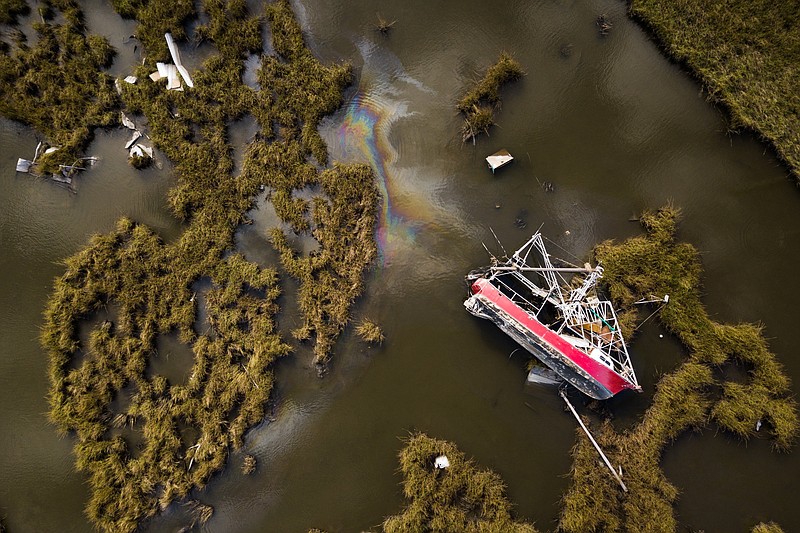NEW ORLEANS — Days before Hurricane Ida hit in August, Maxine and Lanny Martin bought 150 pounds of shrimp in Chauvin, the coastal Louisiana town where they live. The shrimp came from fishers along Bayou Petit Caillou, which runs a few blocks from the house where the Martins raised six children, including Melissa Martin, a chef and cookbook author in New Orleans.
That seafood stockpile is one reason the Martins initially resisted their daughter's pleas that they evacuate in advance of the storm, which devastated communities on the southeast Louisiana coast, including Chauvin.
"I wasn't worried about my house," Melissa Martin said her mother told her later. "I was worried about my shrimp."
The coexistence of abundance and vulnerability shapes lives and priorities in Chauvin and elsewhere on Louisiana's Cajun coast, south of New Orleans. The region, central to the state's commercial fishing industry, has lost land to the effects of climate change, which also makes storms wetter and more powerful. The area provides the inspiration for Martin's restaurant, Mosquito Supper Club, and her 2020 cookbook of the same name.
The damage Ida caused the coast provided the impetus for a fundraising effort, started on a website Martin built in the passenger seat of her car, that has collected more than $765,000 to aid residents on the still storm-battered coast, much of it distributed in cash in partnership with the Helio Foundation, a nonprofit based in Houma, La. "At the beginning, no one could use credit cards for anything," she said. "I was getting hundreds of [direct messages] and emails from people asking for cash."
The campaign continues to invest in projects, including one to repair fishing boats, and amplify the message of her book: Life is perilous for residents of coastal towns like Chauvin and for the rich food culture that flourishes there.
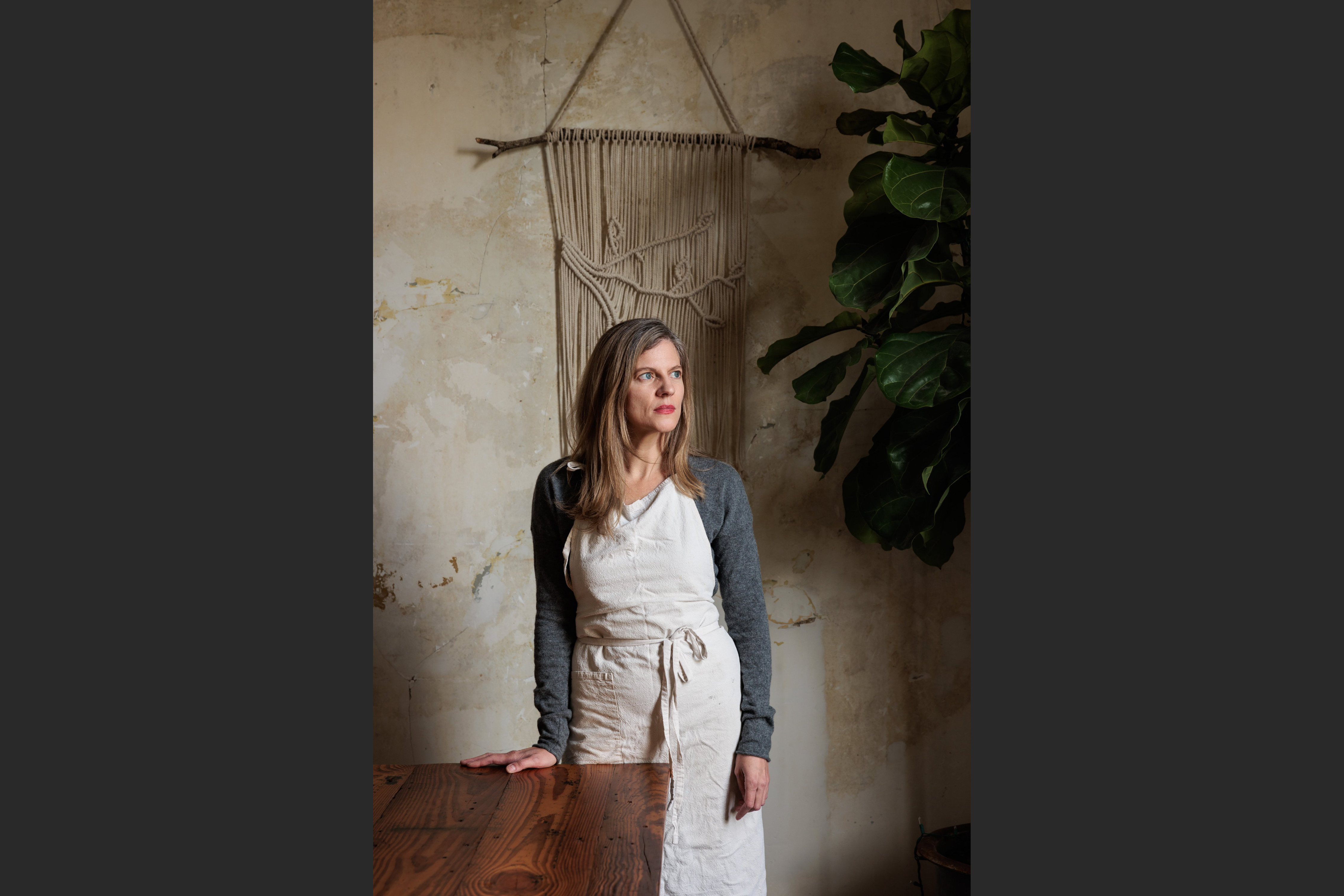 Melissa Martin, owner of the New Orleans restaurant Mosquito Supper Club, sees the environmental damage that could end south Louisiana’s rich culture of food and fishing. (The New York Times/Edmund D. Fountain)
Melissa Martin, owner of the New Orleans restaurant Mosquito Supper Club, sees the environmental damage that could end south Louisiana’s rich culture of food and fishing. (The New York Times/Edmund D. Fountain)
GLOBAL WARMING
Land on Louisiana's coast, which is at the heart of the state's energy business, is known to be vanishing at an alarming rate. Oil exploration and fossil fuel pollution are also thought to be hastening the coastal erosion chipping away at wetlands that are crucial habitat for fish and other wildlife.
Martin, 44, is blunt about the toll this environmental crisis has already taken. The recipes she features in her book, subtitled "Cajun Recipes From a Disappearing Bayou," and at her restaurant represent a culture whose days she believes are numbered. And the demise of an area that serves as a storm buffer for densely populated areas to the north, and that contains billions of dollars' worth of energy infrastructure, will be felt everywhere.
"When this land disappears, it takes with it a portion of our nation's safety and food supply, and a long legacy of culture and traditions," she writes in her book. "Water is our lifeline and our dark shadow."
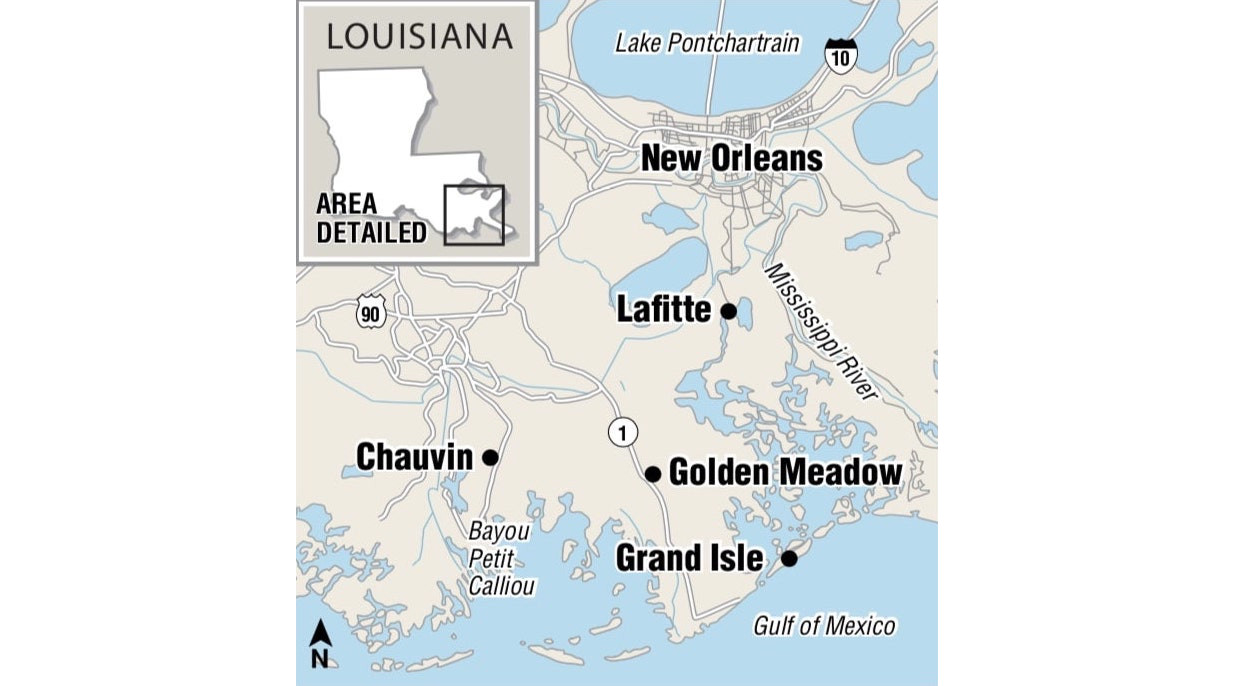 (Arkansas Democrat-Gazette)
(Arkansas Democrat-Gazette)
HURRICANE IDA
When Martin and her father returned to Chauvin a few days after Ida made landfall, the shrimp they discovered still frozen in the family's tightly sealed freezer was the only welcome sight for miles around.
"There were houses in the bayou," she said. "Buildings were just gone."
Martin has traveled to the coast dozens of times since Ida. On those trips, she saw the harm caused by one of the most powerful storms to hit Louisiana since Hurricane Katrina in 2005, compounded in communities that had yet to recover from 2020, when a record number of tropical storms and hurricanes hit the state.
"Right now, it doesn't feel sustainable down there," she said, sitting on Mosquito Supper Club's screen porch in October, for the first of several interviews.
The restaurant, which began in 2014 as a series of Cajun-theme parties and pop-ups, has gradually gained renown for its seafood-focused cuisine and its homespun hospitality — gumbo is brought to the table in pots, along with potato salad, for guests to serve themselves. The food is distinct from the spicier, sausage-forward, often hybridized Cajun cooking common in New Orleans, whose roots mainly run to the inland prairies around Lafayette.
By the time of her cookbook's release in spring 2020, not long after the arrival of the pandemic, Martin had built a loyal following. (Musician and actress Solange Knowles, an early fan, hired Martin to cook for her wedding.)
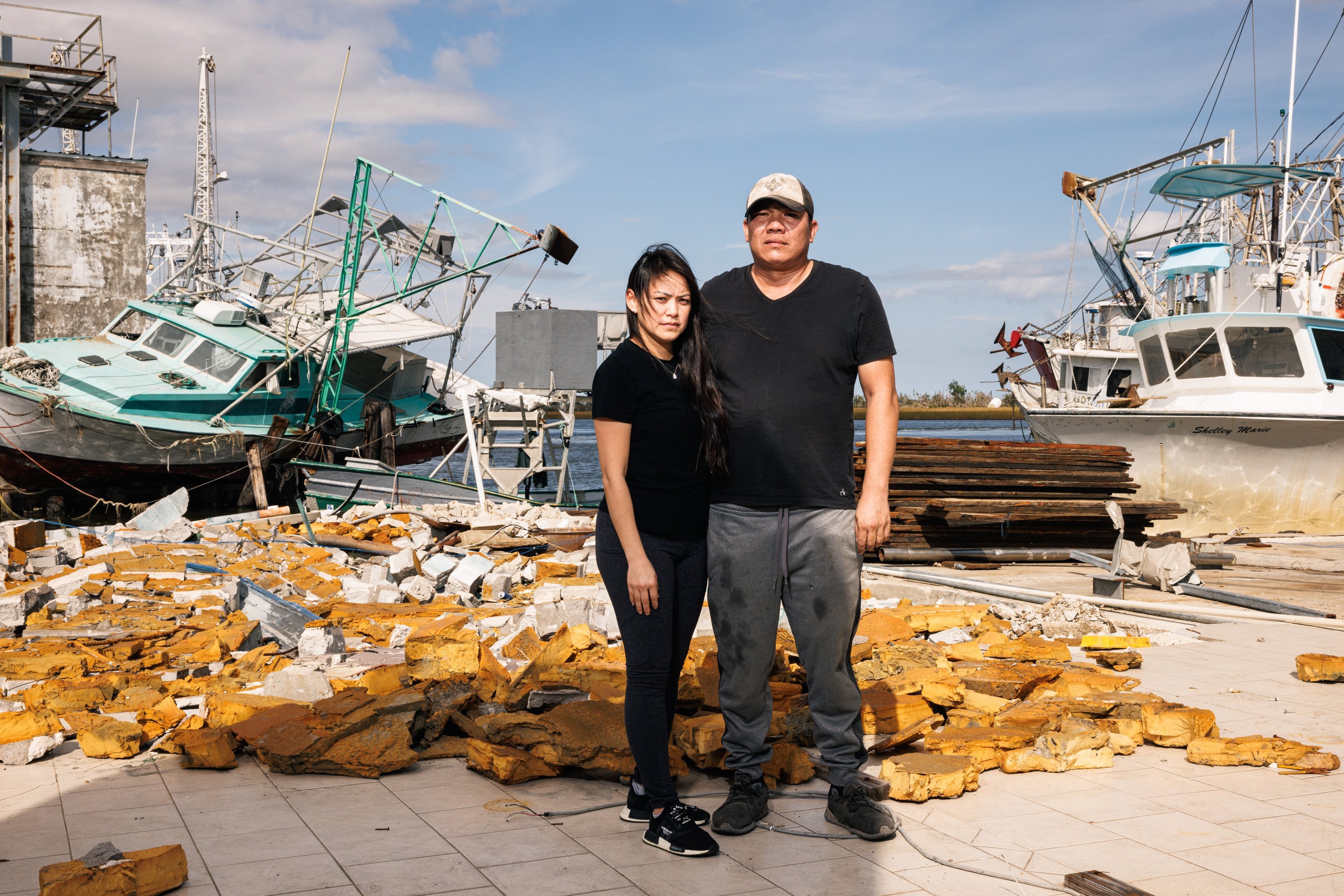 Ngoc and Trung Tran, owners of St. Vincent Seafood Company, are shown at their damaged headquarters in Golden Meadow, La. Their headquarters was destroyed by Hurricane Ida, which also damaged all five of their boats, and they have yet to resume operations. (The New York Times/Edmund D. Fountain)
Ngoc and Trung Tran, owners of St. Vincent Seafood Company, are shown at their damaged headquarters in Golden Meadow, La. Their headquarters was destroyed by Hurricane Ida, which also damaged all five of their boats, and they have yet to resume operations. (The New York Times/Edmund D. Fountain)
EFFECTS ON SEAFOOD
In the fall, Hurricane Ida's ripple effects were still evident in the seafood offerings at New Orleans restaurants. East Coast oysters and farmed striped bass were conspicuously common. Gulf of Mexico blue crab was unusually rare; it remains expensive.
While local seafood is still foundational and widely available in south Louisiana's restaurants, species that used to be ubiquitous now routinely go scarce at some point during the year, and not just after hurricanes.
In 2019, heavy rain and snow runoff flowed down the Mississippi River from the Midwest, inundating the Louisiana coast with fresh water and killing millions of oysters. Land loss and flood control projects have further altered the salinity of many coastal lakes, bays and bayous, forcing fishers to travel farther for a catch whose dockside prices, depressed in part by competition from imports, may not cover expenses.
Those are among the challenges Ngoc Tran was navigating when Ida leveled the headquarters of St. Vincent Seafood Co., which she and her husband, Trung, run on Bayou Lafourche, in Golden Meadow, about 40 miles east of Chauvin. All five of the business' shrimp boats were rendered inoperable by damage from the storm.
She can't imagine passing the business along to her children. "We don't want our kids to go through this," she said.
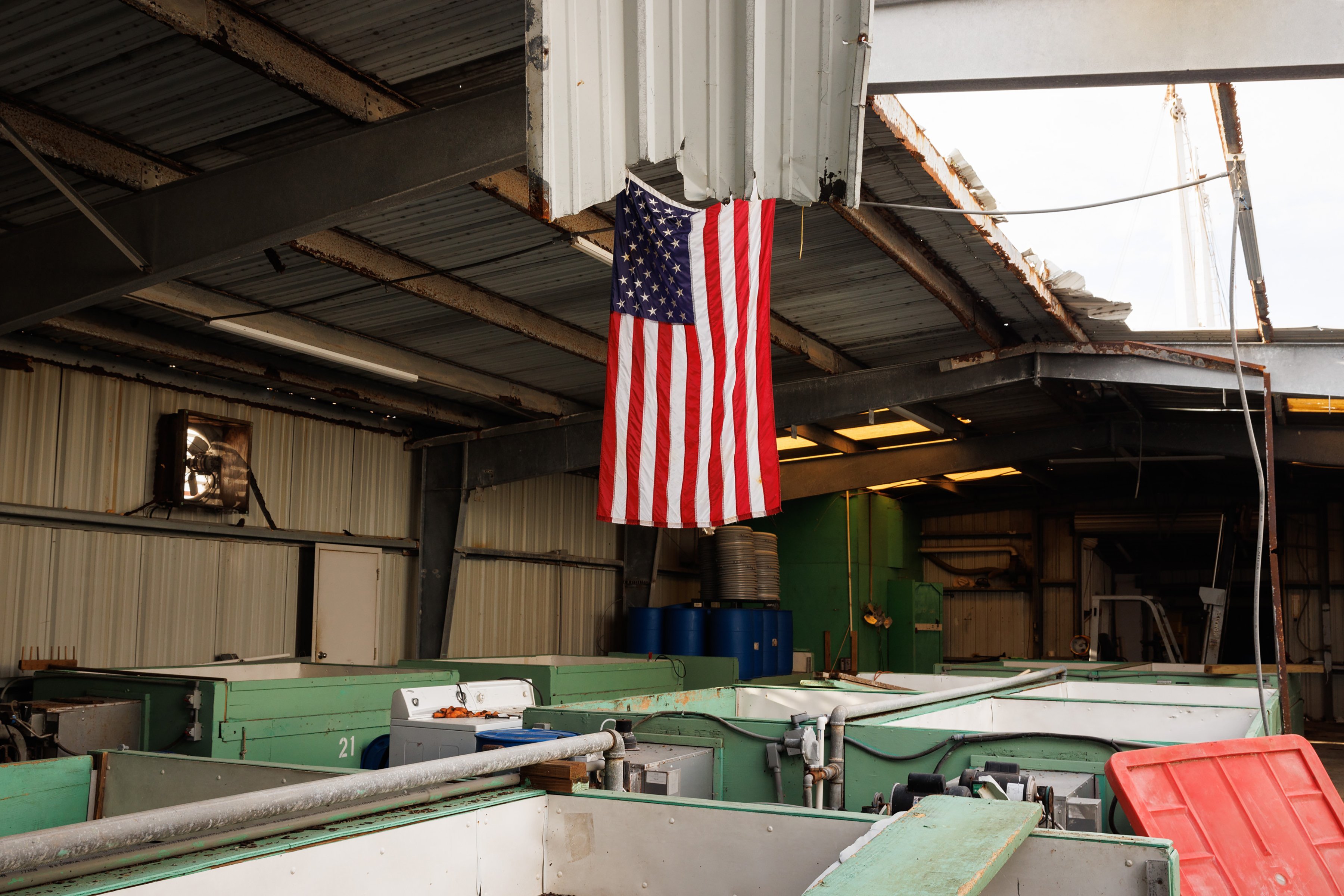 Louisiana Dried Shrimp Company, with part of the roof torn off by Hurricane Ida, sits on Grand Isle, La. While local seafood is still foundational and widely available in south Louisiana’s restaurants, species that used to be ubiquitous now routinely go scarce at some point during the year, and not just after hurricanes. (The New York Times/Edmund D. Fountain)
Louisiana Dried Shrimp Company, with part of the roof torn off by Hurricane Ida, sits on Grand Isle, La. While local seafood is still foundational and widely available in south Louisiana’s restaurants, species that used to be ubiquitous now routinely go scarce at some point during the year, and not just after hurricanes. (The New York Times/Edmund D. Fountain)
HARVEST IS DWINDLING
The reluctance of young people to enter an industry that is more arduous and less lucrative than it was in past generations has left Louisiana with a vexing conundrum: While the seafood remains plentiful — the state still routinely ranks second to Alaska in seafood production — the will and expertise to harvest it are dwindling.
The phenomenon, known locally as "the graying of the fleet," is aggravated by storms like Ida and reflected in the steep decline in the volume of shrimp and oysters caught since 2019. A recently released study by the Louisiana Department of Wildlife and Fisheries and Louisiana State University estimates that the state's $2.5 billion seafood industry suffered nearly $580 million in losses over the past two hurricane seasons.
More than half of the losses came from damage to infrastructure that may never be repaired. In November, Robert Collins, 62, the third-generation owner of Louisiana Dried Shrimp Co., stared into the sky from the floor of his waterside facility in Grand Isle, one of the most vulnerable communities on Louisiana's coast. Ida had torn off nearly all of the roof.
"I'm not going to use my retirement savings to fix this," he said. Collins said his business was still closed and that he was uncertain if it would ever reopen.
The future of the state's seafood industry is invariably going to include newcomers with different expectations and fewer scars than those who were born to it. People like Scott Maurer.
Maurer, 45, fell for the oyster business after moving to Louisiana from Ohio to help rebuild houses after Katrina. Today, he farms premium oysters in cages in the shallow water just off Grand Isle. He remains committed to his Louisiana Oyster Co., even though he lost his entire crop to Ida.
"As long as I can get back to broke every once in a while, I think I'm winning," he said. "I get to live on an island and work on the water."
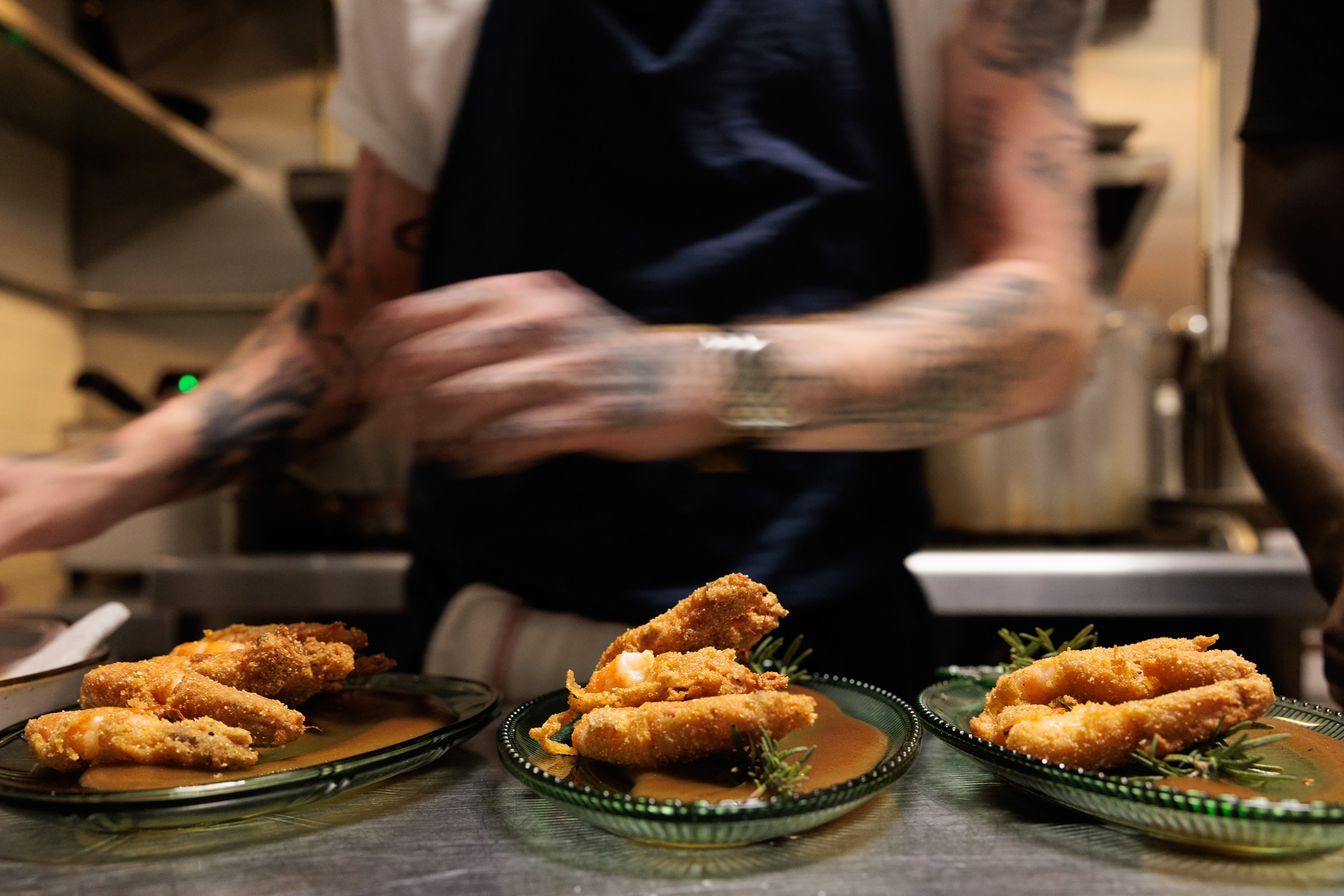 Pan-fried softshell shrimp is served at the Mosquito Supper Club restaurant in New Orleans. From her New Orleans restaurant, Melissa Martin and her family see their livelihoods disappearing. (The New York Times/Edmund D. Fountain)
Pan-fried softshell shrimp is served at the Mosquito Supper Club restaurant in New Orleans. From her New Orleans restaurant, Melissa Martin and her family see their livelihoods disappearing. (The New York Times/Edmund D. Fountain)
MOSQUITO SUPPER CLUB
Martin, the New Orleans chef, is similarly committed to building a business on her own terms. She has always regarded Mosquito Supper Club as a work in progress whose goals depart from those of most traditional restaurants. It started when her daughter was in her early teens and expanded gradually as her duties as a single mother diminished.
The restaurant moved to its current location, inside a Victorian-era cottage in New Orleans' Uptown neighborhood, in 2016. Martin initially shared the space with other female entrepreneurs, including Christina Balzebre, who ran her Levee Baking Co. as a pop-up in the space before opening in a permanent location in 2019.
Today the Mosquito Supper Club occupies the entire cottage, which Martin filled with antiques, handmade furniture and paintings by her brother Leslie, who is also a jazz pianist. The restaurant is open four nights a week for one communal seating (and two private ones) of a preset, multicourse dinner.
Food is served family style in large platters, ceramic bowls or iron pots. A mid-January menu included the restaurant's signature sweet potato biscuits, raw oysters topped with ponzu and finger lime, and shrimp in lemon butter, all paired with natural wines. About 90% of the recipes featured at the restaurant and in her book come from Martin's mother.
The raw oysters and shrimp on the January menu were both from Alabama. And the chef has yet to find a reliable crab purveyor to replace Higgins Seafood, which hasn't reopened since Ida poured mud into its headquarters in Lafitte, La.
"Higgins would not only deliver a superior product. They'd deliver crab shells in plastic Piggly Wiggly bags," she said. "That's the kind of stuff I remember from growing up."
Martin also continues to visit her hometown. She was there last month, at her parents' kitchen table, testing a king cake recipe with her mother for her next cookbook. She said she'll return even after the book is done, "just to keep recording what's happening."
